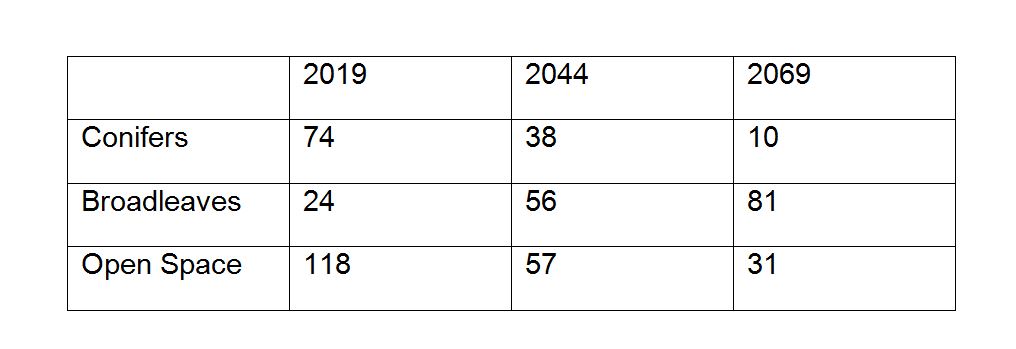North Staffordshire Forest Plan
About
The North Staffordshire Forest Plan (formally Bishops and Swynnerton Forest Plans) which include Big Bishops (352ha), Little Bishops (81ha), Burnt Wood (88ha), Tittensor (72ha), Swynnerton Old Park (329ha) and Walton’s Wood (13ha) covers an area of 935ha and lies 8km west of Stoke on Trent and 19km northwest of Stafford.
The FP woodlands are largely (88%) ancient woodland sites now planted with conifers. Pine is the main conifer species covering 50% of the woodland area. Felling operations carried out over the last 25 years as the conifer crops have matured has created a diverse woodland structure across most of the FP and the transitional open space has created niche habitats for ground nesting birds and a wide selection of Lepidoptera have been recorded.
Objectives
The main objectives for the North Staffordshire Forest Plan are:
Environmental
- Restore ancient woodland sites.
- Widen rides and roads to increase woodland edge and open habitats.
- Manage the SSSI to maintain it in a favourable condition.
- Conserve trees of special interest.
- Increase deadwood habitats.
- Manage wet woodland habitats establishing buffer zones.
- Maintain a pattern of transitional open habitats for ground nesting birds.
Economic
- Continue to grow commercial crops on a sustainable basis through the a Use a combination of clearfell and Low Impact Silvicultural Systems (LISS).
- Make the economic potential of the forest more resilient in the face of a changing climate.
Social
- Facilitate access in Burnt Wood.
- Conserve and enhance surviving elements of the historic environment within the forest landscape
What we'll do
The plan details management operations including approved felling and restocking for the 10 years to 2028, with outline proposals for a 50 year period.
The Forestry Commission will continue to work towards the restoration and management of the ancient woodland in the plan area. In the next rotation native broadleaves will be favoured wherever possible with some honorary native broadleaves being introduced to make stands more resilient to the future impacts from pests, disease and climate change. A combination of clearfell and LISS will be used to provide the best conditions to establish future stands.
The planned areas of clearfelling, restocking and permanent open space creation during the ten years to 2028 are summarised in the table.
In addition to these defined operations, ongoing thinning and selective felling of both conifers and broadleaves will be carried out in the plan area at five to ten year intervals.
The proportions of open space, conifer and broadleaf woodland at the beginning of the plan period are shown in the bar chart. The gradual reduction of conifer cover and the increase in broadleaf woodland and open space expected within the plan period and anticipated over time is indicated in the middle and right hand columns of the chart.
The high level of open space in 2019 is due to extensive areas of forest that blow over in the wind and has now been cleared and waiting to be restocked/regenerate.



